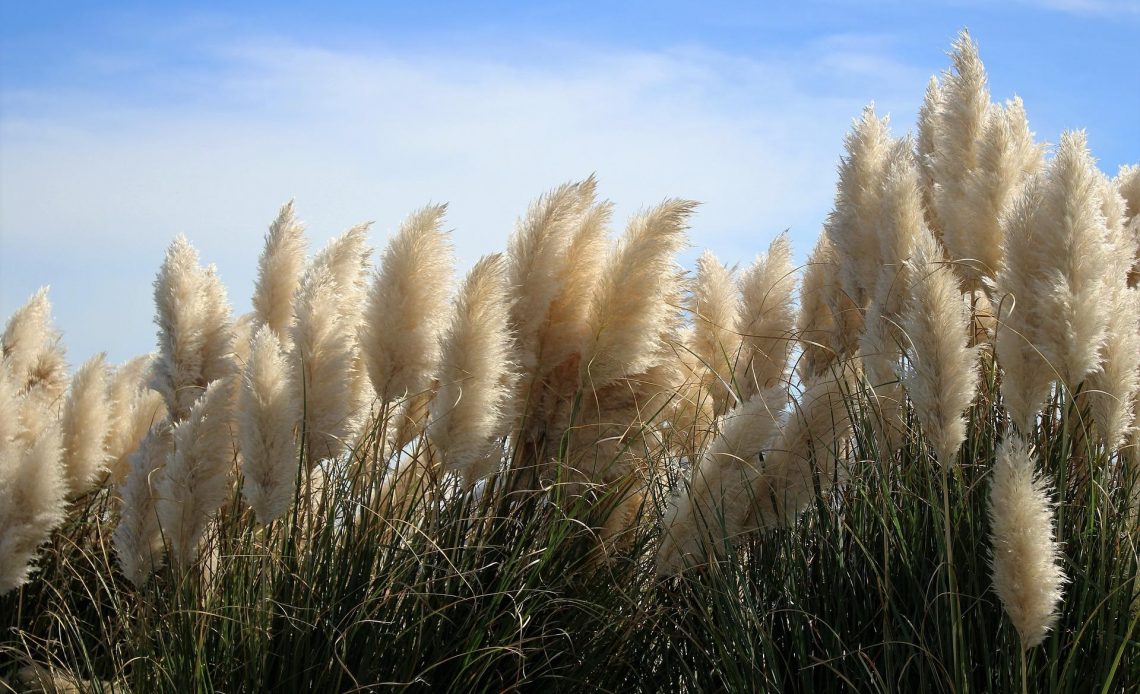

We’re here to help! Wild Yards is a completely free website that is 100% dedicated to helping you create a wildlife-friendly, sustainable yard. Read more
WildYards is reader-supported. When you buy a product through a link on our site, we may earn a comission. Every product is independently selected by our (obsessive) editors and our reviews are unbiased and objective. Read more about our mission or our privacy policy.
Nature is wild and wonderful – with a near-ending supply of interesting-looking species growing out there, there may be a few that catch us by surprise! For example, a handful of plants look like feathers – but which specimens are ideal for growing in your yard?
Calathea makoyana, partridge feathers and plumosa ferns boast feathery flowers and plumes. Their soft, feathery foliage could rival any bird in the sky – and are just a few specimens you can grow to transform the look of your yard. The six picked below are easy to care for, and may even welcome occasional wildlife!
White Feather Pampas Grass (Cortaderia selloana)
White feather pampas grass boasts long, thin, white stalks that shoot upwards, ending in feathery flowers. These plants can grow up to eight feet tall and are known for moving gracefully in the wind, adding to an impressive outdoor display.
Despite their impressive size and grandeur, these plants are relatively easy to grow – they need plenty of sunlight and well-draining soil. With the right care, their feathery ends usually bloom in the summer and can last well into the winter.
You’ll find this a hardy grower between USDAs 7 and 11. It normally won’t fare very well in the winter, meaning if you have the space, you should bring it indoors.
Pampas grass won’t attract bees much, but you’ll find that small animals, birds included, use its large plumes to hide under – it’s great for attracting wildlife. If you want to attract butterflies without the bees, pampas may be an ideal choice – some grass may serve as host plants for larvae, too.
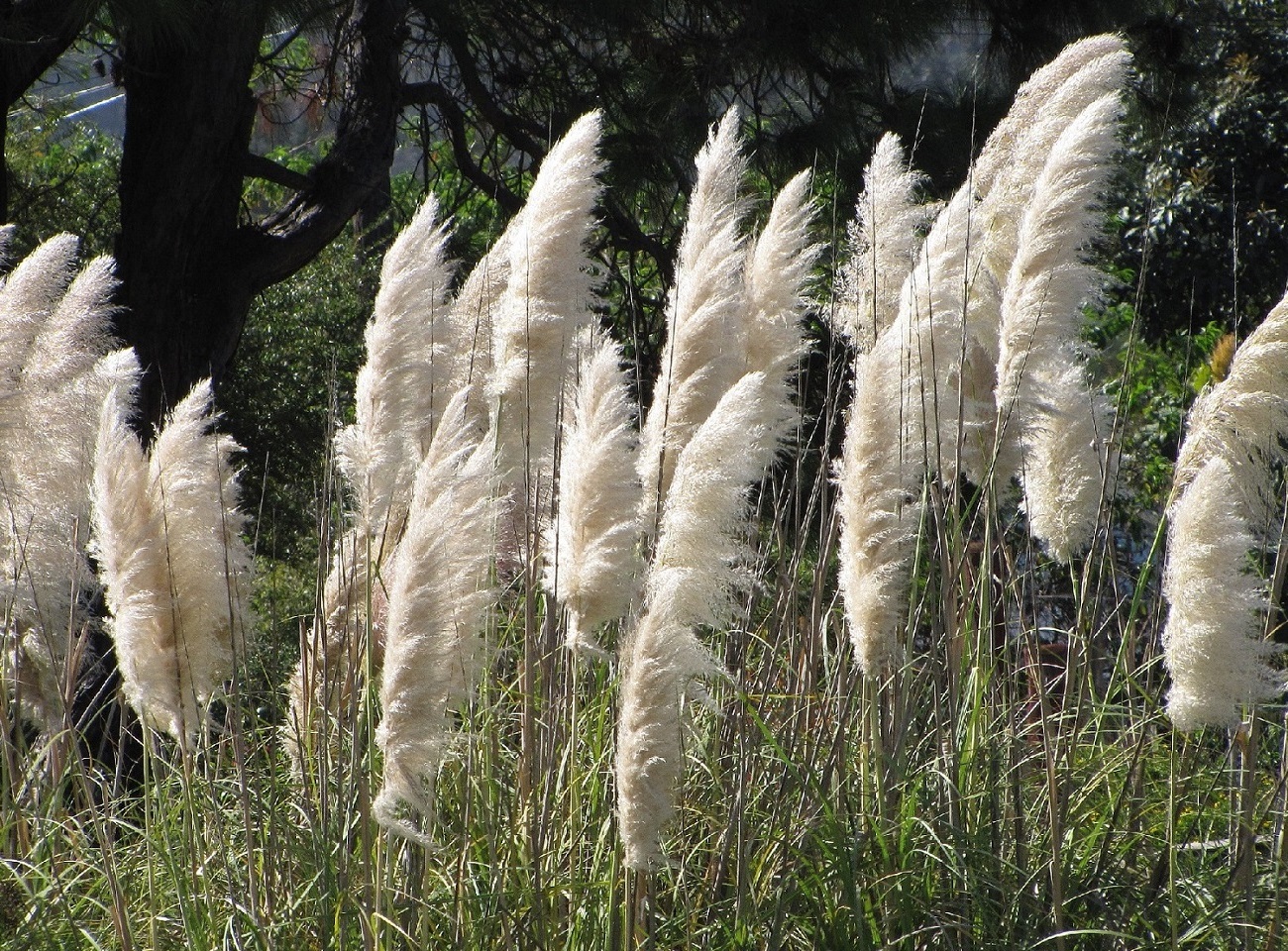
Mexican Feather Grass (Stipa tenuissima)
Mexican feather grass is delightful, tufted grass that boasts long, thin, bright green leaves that end in silky, smooth hairs. This gives the plant a feathery appearance that shines in the sunlight and dances in the wind. It’s a fast-grower that, much like other grasses, needs plenty of sunlight and well-drained soil.
Mexican feather grass is sometimes referred to as angel hair grass thanks to its bird-like plumage – and thanks to its fast propagation, you’ll need to keep it regularly mown. This grass has been known to become very invasive and even destroy other plants when left to grow wild, as is the case in some parts of Australia. Many refer to Mexican feather grass as a weed, too.
Stipa tenuissimas usually flower in early summer through to early fall, but the rest of the year, they will offer a gentle, feathery, verdant touch to your garden’s palette. As with other types of grass, you’ll unlikely welcome bees with this plant – but you may still attract small birds looking for cover.
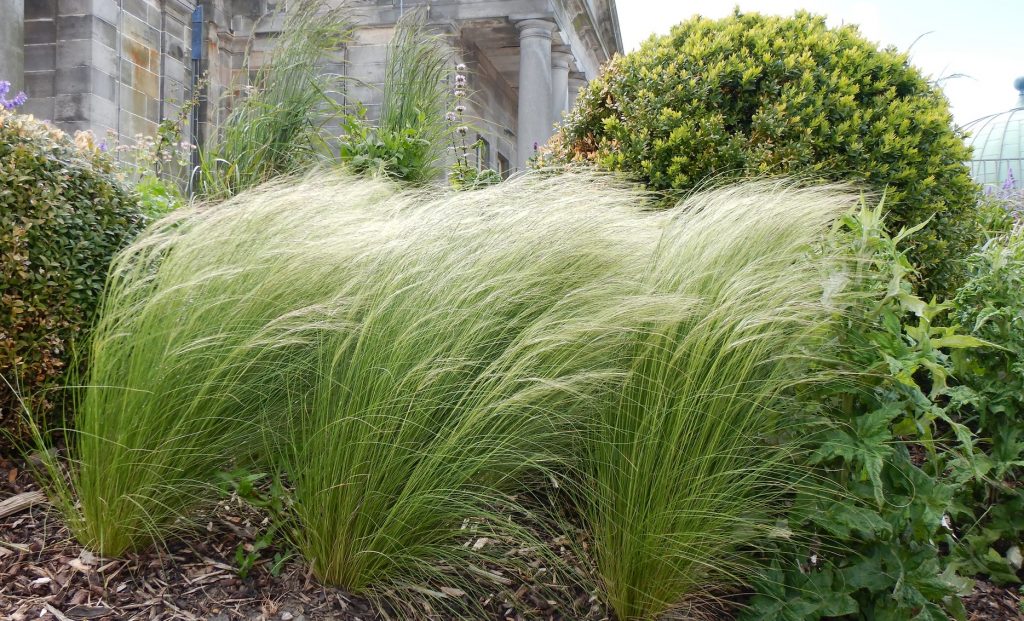
Celosia (Cock’s Comb)
Celosias are beautiful plants with feathery ends in various colors, most notably reds, yellows, oranges, and pinks.
The plumosa variety in particular boasts fluffy, feather-like ends – ‘plumosa’ being the Latin for feathery, or feathered.
Native to Africa and South America, these funky flowers like their heat and abundant water – you will need to grow them in moist soil. It’s a perennial flower in USDA zones 10 and 11, but is an annual grower otherwise.
As the winter rolls in, you’ll need to bring your plumosa indoors before it gets too cold. During the summer, you can expect it to flower consistently – and it’s great for attracting most pollinators.
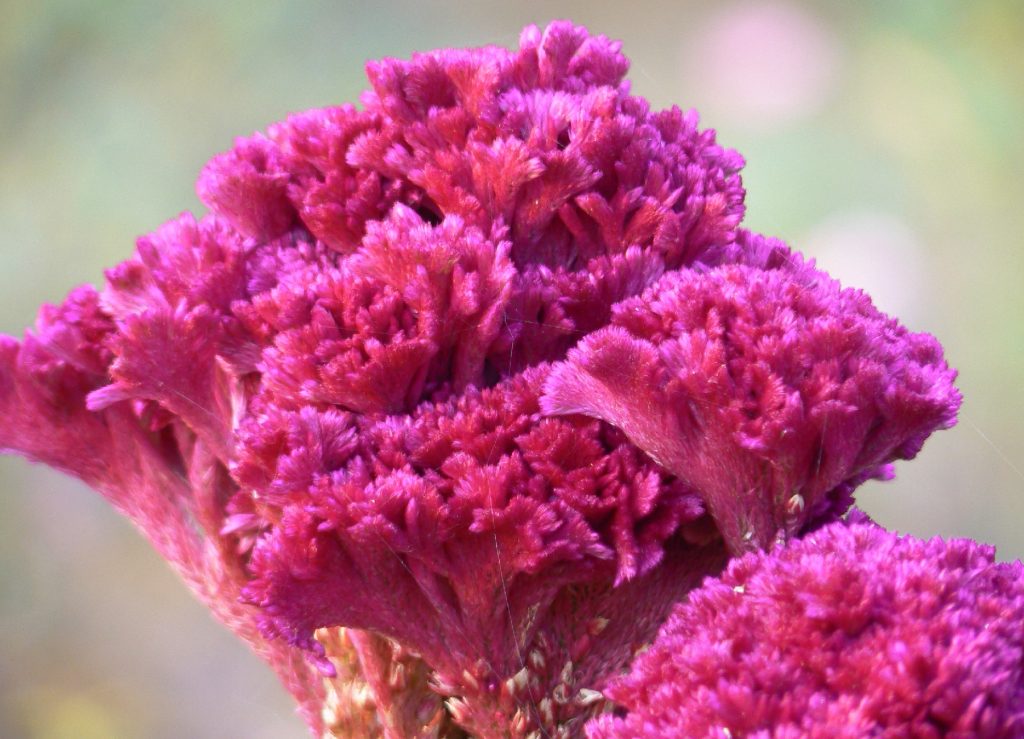
Partridge Feather (Tanacetum)
Impressively feathery, this gray-tinged plant is commonly nicknamed after the bird it mimics so well. It’s a perennial plant that’s extremely hardy against drought, showing strength in USDA zones 4 up through 9.
Providing this feathery plant has access to sun or partial shade and occasional water, you can expect it to boast beautiful yellow flowers that bloom in the late spring.
These silver plants are fantastic for attracting butterflies and bees to your garden and add an exciting, eye-catching touch to an otherwise green yard.
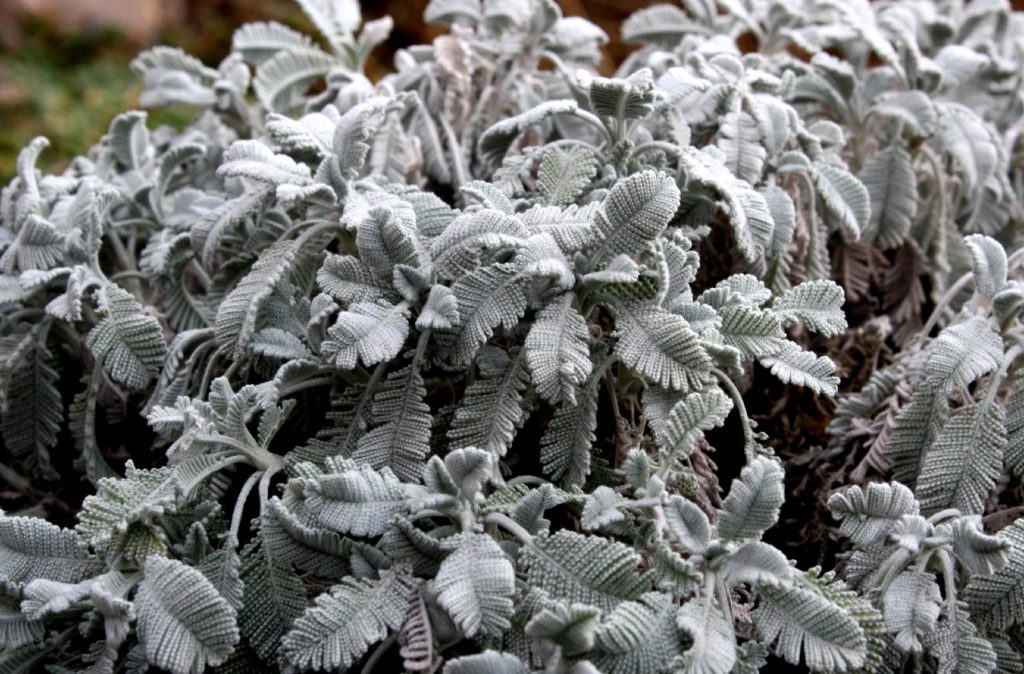
Asparagus Fern (Asparagus Setaceus)
As the name suggests, this plant – which isn’t actually a fern at all – is impressively feathery. These stunning perennials boast the classic bright green colors you’re likely to expect from legitimate ferns, with uniquely fluffy leaves that give them a feathery appeal. This plant is, like its name suggests, loosely related to the asparagus – and its name refers to various plants under the same umbrella.
In particularly hot areas, these plants can thrive year-round, but they usually fare best in pots that can be brought inside in the winter. Despite their propensity to thrive well in heat, you’ll need to give your plumosas indirect sunlight for the best results. If you garden between USDA zones 9 and 11, it’ll do brilliantly in your garden.
Depending on the type of asparagus fern (or lace fern) you grow, there’s ample chance you’ll welcome butterflies to your garden and occasional bees.
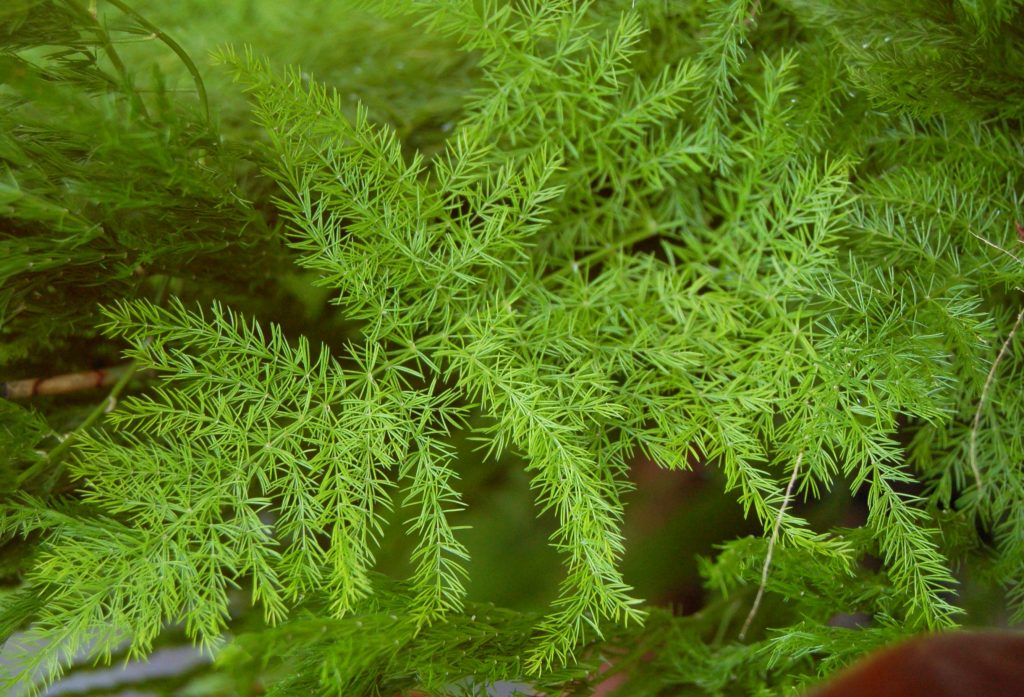
Calathea Makoyana (Peacock Plant)
The calathea makoyana is a green plant with wide, glossy leaves splashed in two shades of green, giving them a unique, eye-catching pattern. They are native to east Brazil and are commonly known as peacock plants – thanks to their feather-like displays.
Calatheas are usually kept as indoor plants, needing plenty of moisture and heat to mimic their natural habitat. As they are non-native to the US, you’ll also need to find these plants at a specialist center or online retailer.
These evergreen beauties can attract pollinators, though it’s other species within the calathea family – such as the calathea lutea – that are best for attracting bees to your garden.
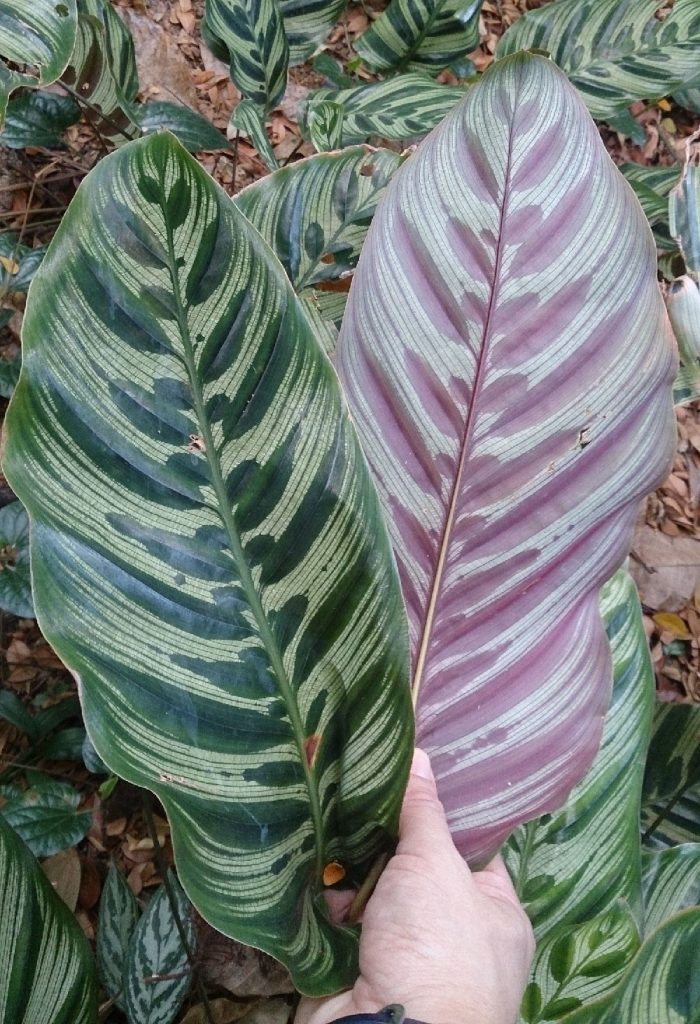
Why grow plants that look like feathers?
Plants that look like feathers simply stand out – whether you are creating a head-turning wild yard from scratch, or are keen to bring a few wild specimens indoors, the above plants are easy to grow and make marvelous centerpieces.
The added benefit to many of these feathery plants lies in their ability to attract hummingbirds, bees, butterflies, and even small mammals to your garden. If you’re in the process of rewilding your lawn, consider growing a few of these plants alongside.
